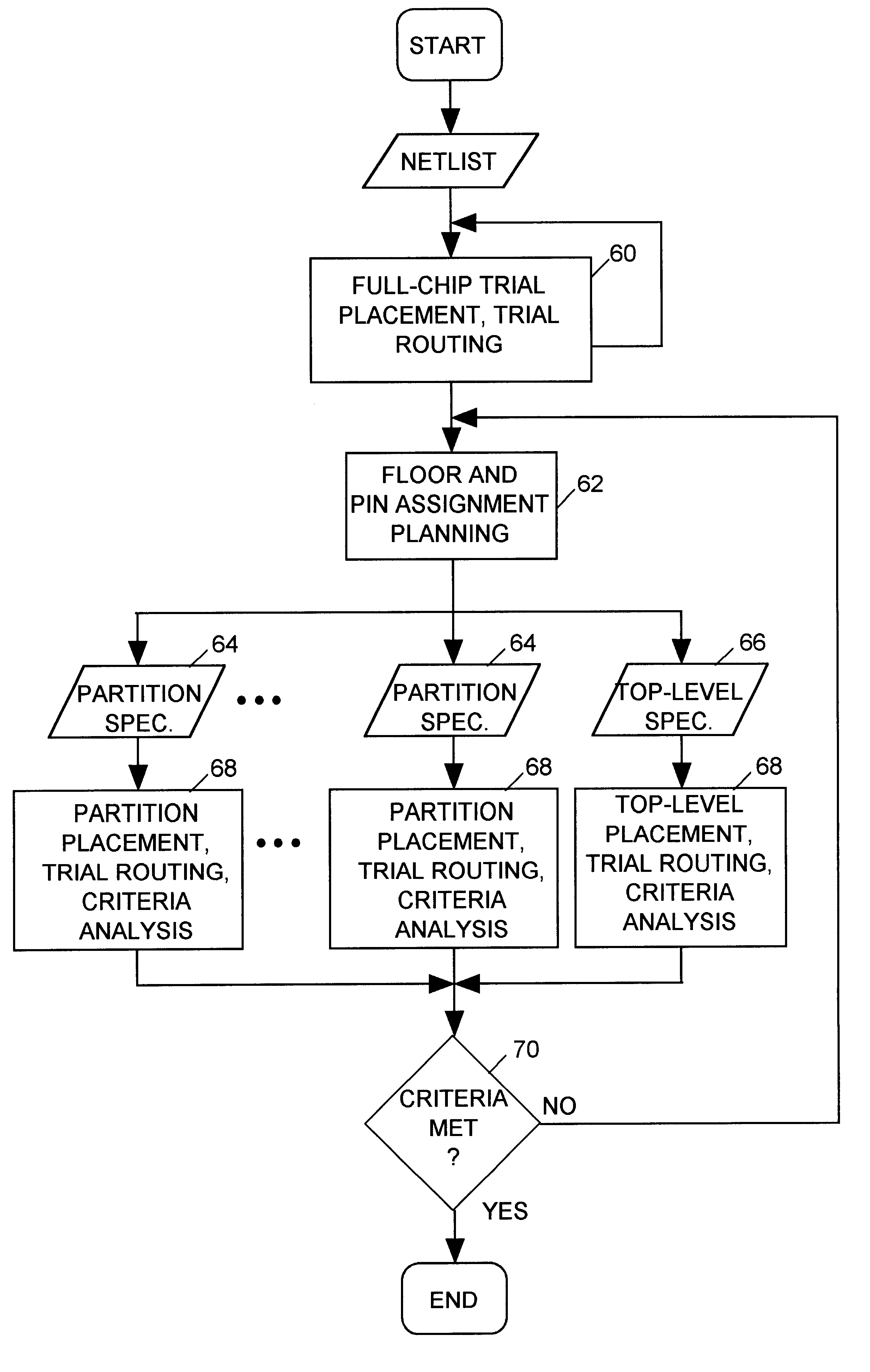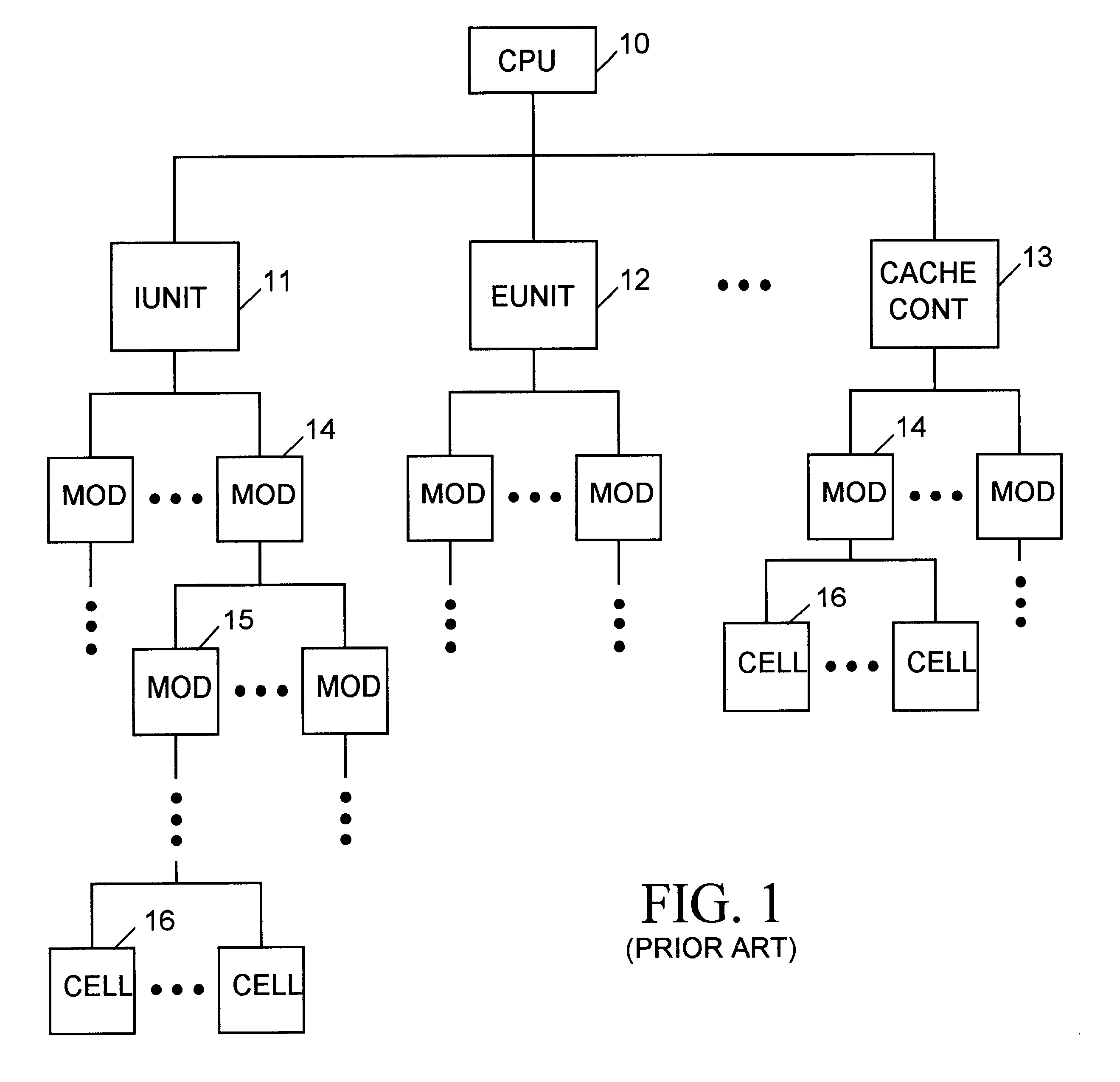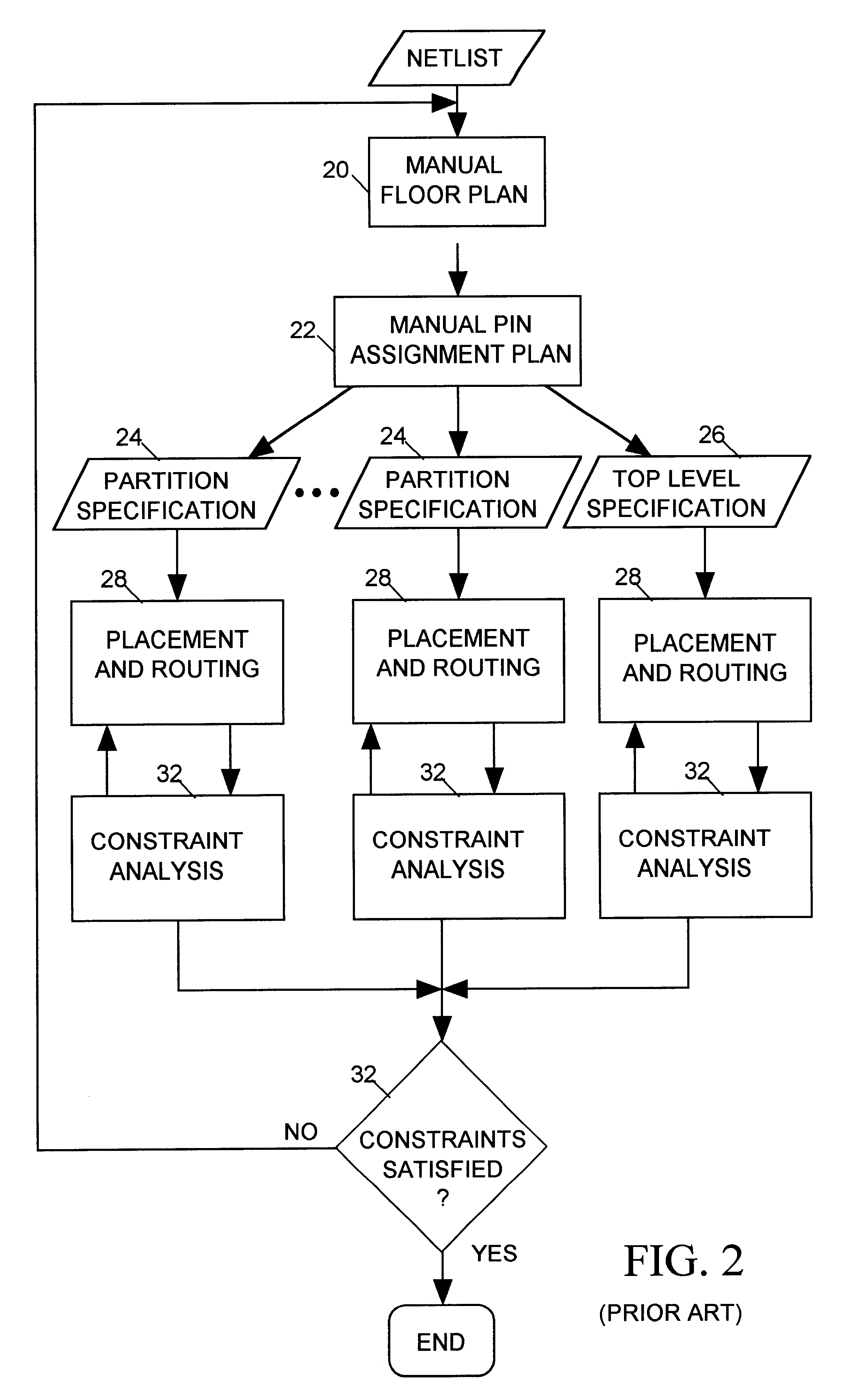Integrated circuit partitioning placement and routing system
a technology of integrated circuits and routing systems, applied in computer aided design, program control, instruments, etc., can solve the problems of slow convergence of intensive iterative process, inability of designers to substantially modify logic modules within ic designs, and insufficient timing verification at this stage of design. achieve the effect of high accuracy
- Summary
- Abstract
- Description
- Claims
- Application Information
AI Technical Summary
Benefits of technology
Problems solved by technology
Method used
Image
Examples
Embodiment Construction
)
Modular Circuit Design
A placement and routing system in accordance with the invention processes a netlist or similar model of a circuit to determine a suitable layout for circuit components within an integrated circuit (IC) substrate. A netlist typically models an IC as a hierarchy of circuit modules wherein each higher level module is formed by lower level modules. FIG. 1 illustrates in block diagram form an example of a prior art hierarchical logic design of a central processing unit (CPU) 10 formed by several high level modules including for example an instruction unit (IUNIT) 11, an execution unit (EUNIT) 12, and a cache controller 13. Each high level module 11-13 is formed by several lower level modules 14 which in turn are formed by still lower level modules 15. Small circuit cells 16 such as logic gates and individual transistors form modules residing at the lowest levels of the hierarchy. The placement and routing system automatically divides the design into several "partit...
PUM
 Login to View More
Login to View More Abstract
Description
Claims
Application Information
 Login to View More
Login to View More - R&D
- Intellectual Property
- Life Sciences
- Materials
- Tech Scout
- Unparalleled Data Quality
- Higher Quality Content
- 60% Fewer Hallucinations
Browse by: Latest US Patents, China's latest patents, Technical Efficacy Thesaurus, Application Domain, Technology Topic, Popular Technical Reports.
© 2025 PatSnap. All rights reserved.Legal|Privacy policy|Modern Slavery Act Transparency Statement|Sitemap|About US| Contact US: help@patsnap.com



